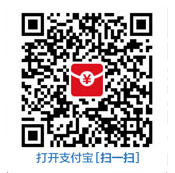
伴随经济的进步与出行的便利, 世界各国、每个城市的交通重压表现得愈加明显。下面我们为大伙收拾的交通重压的英文,期望对大伙有用!
交通重压的英文
Traffic on roads may consist of pedestrians, ridden or herded animals, vehicles, streetcars and other conveyances, either singly or together, while using the public way for purposes of travel. Traffic laws are the laws which govern traffic and regulate vehicles, while rules of the road are both the laws and the informal rules that may have developed over time to facilitate the orderly and timely flow of traffic.
Organized traffic generally has well-established priorities, lanes, right-of-way, and traffic control at intersections.
Traffic is formally organized in many jurisdictions, with marked lanes, junctions, intersections, interchanges, traffic signals, or signs. Traffic is often classified by type: heavy motor vehicle ; other vehicle ; and pedestrian. Different classes may share speed limits and ea百度竞价推广ent, or may be segregated. Some jurisdictions may have very detailed and complex rules of the road while others rely more on drivers’ common sense and willingness to cooperate.
Organization typically produces a better combination of travel safety and efficiency. Events which disrupt the flow and may cause traffic to degenerate into a disorganized mess include: road construction, collisions and debris in the roadway. On particularly busy freeways, a minor disruption may persist in a phenomenon known as traffic waves. A complete breakdown of organization may result in traffic jams and gridlock. Simulations of organized traffic frequently involve queuing theory, stochastic processes and equations of mathematical physics applied to traffic flow.
Traffic in English is taken from the Arabic word taraffaqa, which means to walk along slowly together.
In some places traffic volume is consistently, extremely large, either during periods of time referred to as rush hour or perpetually. Exceptionally, traffic upstream of an accident or an obstruction, such as construction, may also be constrained, resulting in a traffic jam. Such dynamics in relation to traffic congestion is known as traffic flow. Traffic engineers sometimes gauge the quality of traffic flow in terms of level of service.
In measured traffic data, common spatiotemporal empirical features of traffic congestion have been found that are qualitatively the same for different highways in different countries. Some of these common features distinguish the wide moving jam and synchronized flow phases of congested traffic in Kerner’s three-phase traffic theory.
During business days in most major cities, traffic congestion reaches great intensity at predictable times of the day due to the large number of vehicles using the road at the same time. This phenomenon is called rush hour or peak hour, although the period of high traffic intensity often exceeds one hour.
Some cities adopt policies to reduce rush-hour traffic and pollution and encourage the use of public transportation. For example, in So Paulo, Manila and in Mexico City, each vehicle has a specific day of the week in which it is forbidden from traveling the roads during rush hour. The day for each vehicle is taken from the license plate number, and this rule is enforced by traffic police and also by hundreds of strategically positioned traffic cameras backed by computerized image-recognition systems that issue tickets to offending drivers.
In the United States and Canada, several expressways have a special lane that can only be used by cars carrying two or more people. Also, many major cities have instituted strict parking prohibitions during rush hour on major arterial streets leading to and from the central business district. During designated weekday hours, vehicles parked on these primary routes are subject to prompt ticketing and towing at owner expense. The purpose of these restrictions is to make available an additional traffic lane in order to maximize available traffic capacity. Additionally, several cities offer a public telephone service where citizens can arrange rides with others depending on where they live and work. The purpose of these policies is to reduce the number of vehicles on the roads and thus reduce rush-hour traffic intensity.
Metered freeways are also a solution for controlling rush hour traffic. In Phoenix, Arizona and Seattle, Washington, among other places, metered on-ramps have been implemented. During rush hour, traffic signals are used with green lights to allow one car per blink of the light to proceed on to the freeway.



